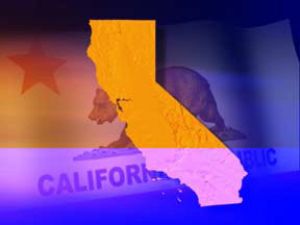
California’s unemployment rate, according to the most recent figures, is 12.4 percent, down from a revised 12.5 percent the month before, which was the highest jobless rate ever recorded for California since the Bureau of Labor Statistics began collecting standardized data in 1976.
Such high unemployment is powerful evidence of an economy in grievous condition. The time to take corrective action is now.

Labor markets enable the critical exchange of workers’ efforts, ingenuity, and creativity for compensation, which sustains them and their families. The foundation of any healthy society is based on this exchange. Unfortunately, California’s labor market reflects, not only a recession, but, in many areas, a full depression.
Californians also tend to be unemployed for much longer spells than elsewhere. Preliminary BLS statistics for last year indicate that the average length of unemployment in California was 26.5 weeks, fifth-highest in the nation.
Almost 35 percent of the unemployed in California were without work for longer than 27 weeks, a generally accepted measure of severe or long-lasting unemployment. Indeed, almost one in five unemployed California workers –18 percent – had been so for 52 weeks or longer in 2009.
The BLS also calculates a measure for workers who are only “marginally employed” and “part-time workers who want full-time work.” If these “underemployed” workers are added to the unemployment rate in California, an astonishing 21.1 percent of workers in 2009 were either unemployed or underemployed. Only Michigan, at 21.5 percent, had a worse rate.
Legislators should not deceive themselves. Only part of the problem is cyclical and linked to the national recession. The state’s problems predate the recession and reflect a deeper policy-induced crisis. Over time, California has implemented tax, spending, and regulatory policies that have a placed a prominent “closed for business” sign on the state. If we are to emerge from the current economic crisis and return to the prosperity enjoyed by previous generations, the state must implement three dramatic reforms immediately, with particular attention to jobs.
- The state must implement spending reductions in order to achieve a sustainably balanced budget. That will require difficult cuts, but they can be mitigated through spending reforms. In other words, don’t just cut spending but change the way in which spending is done. Other states and countries show how services can be delivered more efficiently, and we need to learn those lessons.
- The state must implement tax cuts. In particular, the state must dramatically reduce marginal personal income tax rates and the corporate income tax. Such changes would send a strong signal to potential investors and businesses that the state is again serious about development and investment.
- The state must suspend, and in some cases repeal, a whole series of regulations that impose significant costs on businesses without necessarily delivering any real benefits. In fact, to send notice that the state is again open for business, California should impose a moratorium on all new regulations. The current economic crisis, with its record unemployment, is simply unacceptable in a state with as much potential as California. The single political priority for the foreseeable future should be the creation of a thriving environment for business investment and entrepreneurship, the only way to create lasting and sustainable advances in employment. It’s time to act now to put Californians back to work and return the state to its rightful place of economic leadership.
Make California ‘open for business’
Pacific Research Institute
California’s unemployment rate, according to the most recent figures, is 12.4 percent, down from a revised 12.5 percent the month before, which was the highest jobless rate ever recorded for California since the Bureau of Labor Statistics began collecting standardized data in 1976.
Such high unemployment is powerful evidence of an economy in grievous condition. The time to take corrective action is now.
Labor markets enable the critical exchange of workers’ efforts, ingenuity, and creativity for compensation, which sustains them and their families. The foundation of any healthy society is based on this exchange. Unfortunately, California’s labor market reflects, not only a recession, but, in many areas, a full depression.
Californians also tend to be unemployed for much longer spells than elsewhere. Preliminary BLS statistics for last year indicate that the average length of unemployment in California was 26.5 weeks, fifth-highest in the nation.
Almost 35 percent of the unemployed in California were without work for longer than 27 weeks, a generally accepted measure of severe or long-lasting unemployment. Indeed, almost one in five unemployed California workers –18 percent – had been so for 52 weeks or longer in 2009.
The BLS also calculates a measure for workers who are only “marginally employed” and “part-time workers who want full-time work.” If these “underemployed” workers are added to the unemployment rate in California, an astonishing 21.1 percent of workers in 2009 were either unemployed or underemployed. Only Michigan, at 21.5 percent, had a worse rate.
Legislators should not deceive themselves. Only part of the problem is cyclical and linked to the national recession. The state’s problems predate the recession and reflect a deeper policy-induced crisis. Over time, California has implemented tax, spending, and regulatory policies that have a placed a prominent “closed for business” sign on the state. If we are to emerge from the current economic crisis and return to the prosperity enjoyed by previous generations, the state must implement three dramatic reforms immediately, with particular attention to jobs.
Nothing contained in this blog is to be construed as necessarily reflecting the views of the Pacific Research Institute or as an attempt to thwart or aid the passage of any legislation.